It is better to exclude seafood from your pet's diet during pregnancy, because it destroys vitamin B, which is essential for kittens.
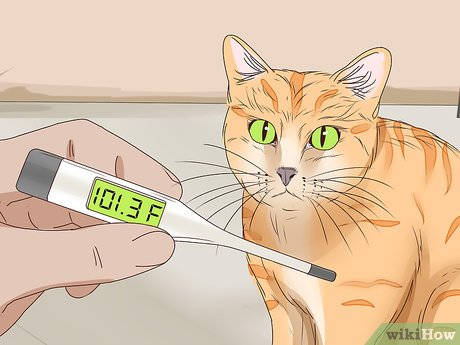
- How do you know when a cat is giving birth?
- Antecedents of labor
- How to help an animal
- Preparing for birth
- Signs that the birth is coming
- How to Recognize Signs of a Troubled Labor
- How to determine a cat's due date
- First signs of labor in a cat
- How to find out if your cat is pregnant
- Signs of fertility readiness
- At what age and under what conditions can a cat become pregnant
- How to tell if a cat is pregnant
- What not to do before labor begins
- What to feed a pregnant cat
- First Signs
- Signs that labor has already started
How do you know when a cat is giving birth?
It is impossible to predict the time of labor in a cat, because the pregnancy of each pet proceeds according to its individual characteristics.
However, there are a number of signs that can be used to determine when kittens are about to be born:
About a week or a few days before the birth, the cat's behavior changes, becoming more nervous and even aggressive. It may avoid contact with people or, on the contrary, it will attract attention and call its owner.
During the same period, the cat is looking for a secluded corner, it may climb into cabinets, hide under the bed. The owner should arrange a suitable place in advance and show it to the cat so that it gets used to it.
The cat may purposely pull the hair around the nipples to facilitate access to milk for future kittens.
One to two days before delivery, the cat's mammary glands swell and produce some colostrum (the first milk, which is rich in antibodies that strengthen the kittens' immune system).
The cat's appetite decreases up to complete refusal of food, she also drinks less.
Activity decreases. The cat lies more, may look apathetic and indifferent.
The day before labor the cat begins to actively lick itself – this is due to the fact that before the birth of the genitals the protective mucous plug comes out of the genitals.
A few hours before labor (about 5 hours) the cat has a characteristic curve of its back, this is due to the occurrence of short contractions of the uterus.
Cat labor often occurs at night. In order to give birth under the control of the owner, it is necessary to monitor the condition of the pet not only during the day, but also at night.
Antecedents of labor
It is important to know at least the approximate date of conception in order to calculate the day when the pet becomes a mother. When the due date is approaching, you need to create the most comfortable conditions for the pet, try to keep it away from other pets, small children, make sure it does not leave the house/apartment, otherwise you will have to look for a long time later, where its offspring was born.
Kittens seldom survive premature birth. If the cat does not give birth within 75 days of fertilization, take her to the vet immediately!
Typically, the cat's personality changes a couple of days before she gives birth. The animal becomes restless, carefully licks genitals, begins to look for a secluded place, sometimes hiding in a closet or under a blanket. You should not scold your pet, you need to show her the conditions created specifically for this event.
However, not all expectant mothers are so conscious. Some, especially those who are preparing for a new addition for the first time, do not realize what is happening to them until the very last moment. But, fortunately, an attentive owner can always realize that very soon, literally in a day or two, kittens will appear in the house by the following changes in the animal:
- Enlargement of the mammary glands and secretion of colostrum;
- An increase in the vulva;
- lowering of the abdomen;
- decrease in body temperature by 1-1.5 degrees;
- decreased appetite;
- active movements of kittens in the womb, which can be seen even with the naked eye while the mother-to-be is sleeping or resting;
- the withdrawal of the birth plug;
- Broken water.
How to help an animal
Backyard cats have more developed instincts than purebreds. That's why the first often give birth more easily, the owner just need to be there to show his love and concern. But at times, it is impossible to do without birthing assistance. Causes may include:
- Intense contractions. In this case you should gently stroke the pregnant woman's belly. Putting a small amount of vaseline in the vagina will also help. An intramuscular injection of oxytocin in a dose of 1-3 units is considered an excellent stimulant of labor activity.
- A large fetus in relation to the birth canal. Lubrication of the vagina with Vaseline will help. You can try to slightly widen the passage with your fingers and pull the kitten out. If there is no result, you can not do without a caesarean section, which, in the absence of experience, we strongly recommend not to do on your own.
- Two kittens stuck in the birth canal. Improper positioning of the fetus.
- Congenital abnormalities of the pelvic organs. In the last three cases, only an experienced veterinarian can help, because it is unlikely to do without surgical intervention.
If you are unsure of your own abilities, do not try to help the animal yourself, it is better to see a specialist.
After kittens are born, the new mother begins to lick them, if this does not happen the owner should wipe them with a napkin.
As a rule, cats themselves chew the umbilical cord of their babies, but not all. Owners of such inconsiderate individuals will have to cut the umbilical cord themselves. To do this, first tie it with threads in 4 centimeters from the kitty's tummy and carefully cut it with scissors, which should be treated with disinfectant.
And another nuisance that sometimes kitten owners encounter is that the cat refuses to feed them. Put the babies under the side of the animal, perhaps the instincts will take over. Otherwise, you will have to stock up on cat milk substitute and patience, since feeding the babies is a responsible and round-the-clock affair.
Preparing for birth
Often pets give birth so quietly and gently that the owner does not even have time to notice any traces of the event. But in case of complications the cat may need human help, so it is better to find out in advance how to determine if the cat is giving birth, and to prepare carefully for this event.
By the end of the third trimester of pregnancy the caring owner should be ready with items and medicines that may be useful during the birth, as well as immediately after it. So, if you are worried about the health of your pet and her future babies, you must have them on hand at the time of calving:
- Oxytocin, a drug that stimulates labor, in case it is delayed.
- Sterile latex gloves.
- Sterile scissors and floss.
- Antiseptics in powder and liquid form for animals.
- Green cloth and cotton balls for treating the umbilical cord.
- Special suction, pear, or pipettes to remove fluid from kitten's airway if she begins to choke.
- Clean terry towels for wiping kittens.
- Veterinarian's phone number for an emergency consultation.
- Cat's milk substitute (she may not have it).
- A sturdy cardboard box for kittens with low sides (it does not matter if you buy it at a pet store or make it yourself – the main thing is that the cat can freely "travel" in and out of it without disturbing the kittens).
Signs that the birth is coming
So, you have already bought and prepared everything necessary, and now you have to wait for birth of the kittens. And then the question arises again: how to understand that the cat gives birth, the signs of the end of pregnancy are obvious, but the inexperienced owner needs more information, to be able to come to the aid at the right moment.
- The animal shows a lot of anxiety, meows loudly, looking for a comfortable, often hidden place to resolve the breeding;
- The mammary glands greatly increase in size and the skin around the nipples is dry and flaky;
- 24 hours before calving, the pet is lactating;
- body temperature drops to 37 degrees or lower;
- On the day of calving the cat loses interest in food altogether;
- Several hours before calving the cat begins to arch her back frequently;
- the animal licks genitals, that often give off a malodorous smell (sometimes you can notice a mucus plug, which is a transparent or pinkish, yellowish and even greenish clot, but usually an animal "takes out" a plug, that comes out piece by piece, together with excretions).
The withdrawal of the plug and an actively "moving" abdomen indicate that the pet is about to go into labor or has already gone into labor.
How to Recognize Signs of a Troubled Labor
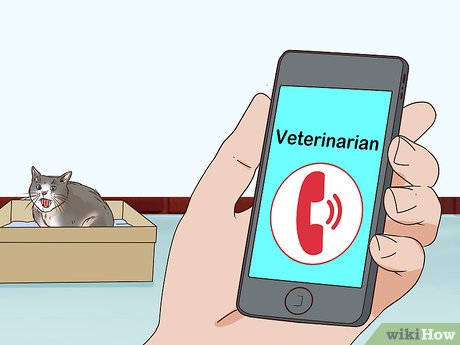
If labor is delayed, call your veterinarian. Most cats will give birth quietly on their own. But it's always worth keeping an eye on your cat during labor. If by all indications (for example, you see contractions) your cat is in the active labor stage, but nothing happens within an hour, call your vet immediately. The vet can determine what kind of help your cat needs. [14] X Reliable Source Cat Fancier's Association Go to Source [15] X Source Information
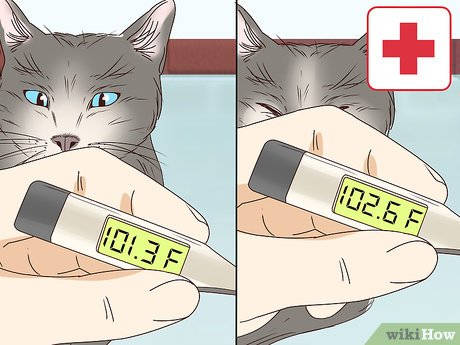
Monitor your cat closely if her temperature rises. By checking your cat's body temperature, you can not only be aware of an impending labor, but also of potential problems. Usually a cat's body temperature drops toward labor. If the opposite happens and your cat's body temperature rises, keep a close eye on her and take her temperature a second time as soon as possible. If it is still above normal, call your veterinarian. [16] X Reliable Source Cat Fancier's Association Go to Source
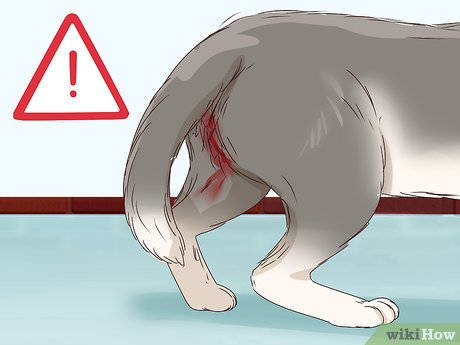
Watch for any suspicious discharge. Small amounts of blood may be secreted during labor. Among the secretions of a laboring cat will also be mucus plug and amniotic fluid. But if you notice heavy bleeding or discharge with an unpleasant odor, contact your doctor, as these signs may indicate a problem. [17] X Source of Information
How to determine a cat's due date
There are special pregnancy calculators to determine the most likely date of delivery. But the calculation will not be accurate. And all because its duration is affected by several factors at once.
Breed. Pregnancy in Siamese cats and orientals can last 66 days. While in burma or kitten – only 53 days.
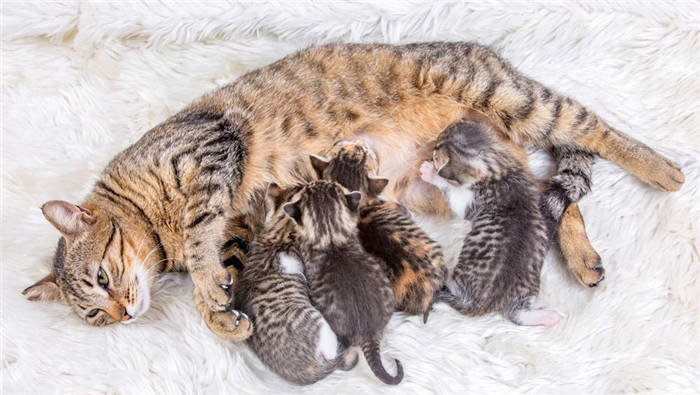
Number of kittens. If you have a multiple birth (more than 5 kittens), the delivery starts earlier, if not enough (1-2 kittens) – the cat goes into labor.
Psycho-emotional state. If the cat is undergoing severe stress – for example, moving to a new home – the kittens may be born as premature or premature.
Age. First-born and mature cats (over 5 years old) can give birth later.
It is also not possible to rely on the age of the previous pregnancy. Even if it is not the first time a cat has given birth, each subsequent pregnancy proceeds differently, and no one can guarantee a repeat of past experiences.
Instead, veterinarians recommend looking closely at the first harbingers of labor. As a rule, they are of the same type and begin 2-3 days before the important date, or even a week.
First signs of labor in a cat
The harbingers of the imminent birth of kittens are of two kinds: behavioral and physiological. Let's break down both of them in relation to the time at which they can be noticed:
1 week before delivery. The cat is actively looking for a secluded quiet place and spends a lot of time there. Some pets will put rags, wipes, or towels there. But this is not necessary.
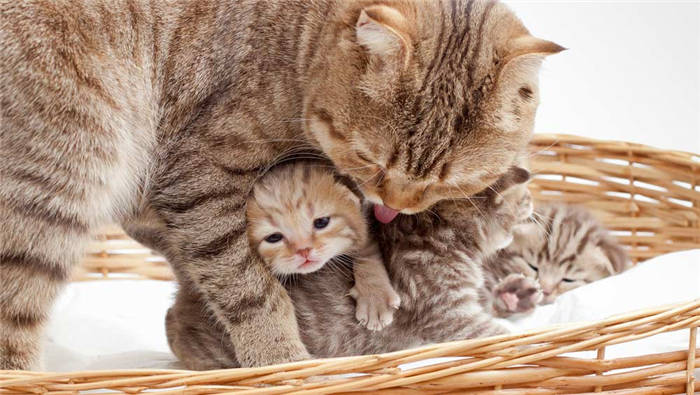
When examining the nipples of the mother-to-be, you can notice that they are enlarged in size and the skin in their aureole is peeling. These are signs of early production of colostrum, a mammary gland secretion rich in antibodies to form the primary immunity of the cubs.
The cat's general behavior expresses nervousness. The animal may become aggressive and irritable or, conversely, atypically sociable and affectionate.
2 to 3 days before delivery. The cat loses its appetite and drinks little. Eaten food begins to put pressure on the uterus and cause the animal discomfort. Therefore, the daily portion is not eaten completely, and the pet often screams immediately after feeding.
1-2 days before delivery. The cat follows the owner on his heels and attracts his attention with his voice.
At the same time, you can notice that colostrum begins to emerge from the nipples, and mucus plug begins to emerge from the loop. If the pregnancy proceeds without abnormalities, the mucus will be transparent with small streaks of blood. If something has gone wrong – cloudy, with an unpleasant smell, yellowish or green. If mucus of atypical color and consistency is found, seek immediate medical attention. This may be a sign of kitten death, an infection of the birth canal or uterine inflammation.
1 day before delivery. Body temperature drops 1 degree (to approximately 37-37.5 degrees). To track the temperature drop relative to the usual norm, the owner will need a chart of its fluctuations over the previous week. Measurements are taken rectally or with an ear thermometer. But its readings are less accurate.
How to find out if your cat is pregnant
This article is co-authored by Natalie Punt, DVM, our regular contributor. The regular contributors to wikiHow work closely with our editors to ensure that the articles are as accurate and complete as possible.
Number of sources used in this article: 7. You will find a list of them at the bottom of the page.
Typically, a cat's gestation period lasts about nine weeks, and changes in the cat's physical condition and behavior show up shortly after the onset of pregnancy. [1] X Source of Information Knowing how to identify these changes will help you know if your cat is pregnant. However, the best and most surefire way is, without a doubt, a visit to the veterinarian. It is advisable to have the cat spayed unless you breed cats professionally, since due to the large number of stray animals, many of them are euthanized.
Signs of fertility readiness
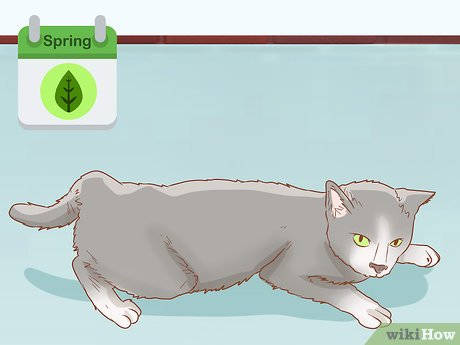
- As a rule, the sexual activity of domestic cats increases with the duration of daylight hours and warming, i.e. in spring and summer.
- Periods of heat (fertility readiness) can begin in a cat when it reaches about 80% of its weight at maturity, and usually begin with warmth. This means that in some, rather rare cases, a cat may start her heat as early as four months of age.
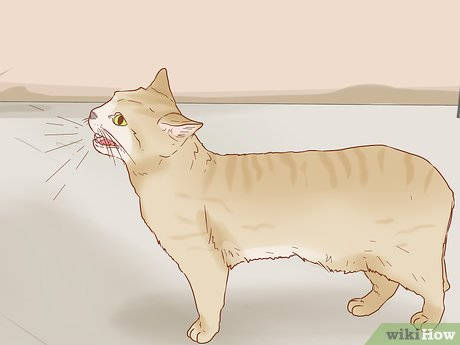
- Before the onset of heat, the cat begins to show signs of anxiety, becomes more affectionate, it makes low noises and exhibits an increased appetite. [3] X Source of Information
- With the onset of heat, the cat begins to "howl," that is, purr and meow frequently and persistently; the animal often loses its appetite in the process.
- During the heat period the cat becomes much more affectionate towards people; it rolls on the floor and also mounts its back up, stomping on it with its hind legs and hanging its tail to its side. [4] X Source of information [5] X Source of information
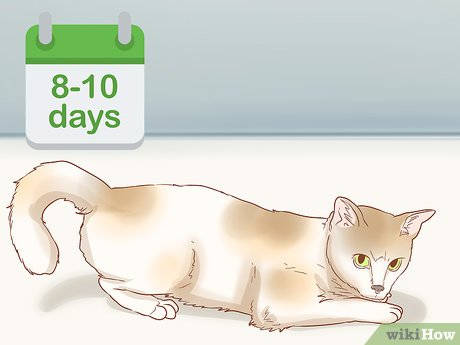
- If you notice that your cat has recently been in heat, it is possible that she has become pregnant.
- After the heat period, the cat goes through a "quiet phase," lasting about 8-10 days, during which time the animal calms down. However, this phase is followed again by a heat wave, and this may continue from April until September. [6] X Source of Information
- To prevent periods of heat and unwanted pregnancies, a cat should be spayed by choosing the right time for the operation.
At what age and under what conditions can a cat become pregnant
The main condition. Breeding readiness is determined by the presence of a heat. In most cats, it begins at 7-9 months and lasts until 7 years of age. However, in some cases it may come earlier or, conversely, be delayed. For example, short-haired cats develop a little faster, and may show the first signs of sexual behavior as 5-month-old kittens. While some long-haired congeners mature only at 1.5 years.
Time of year. The sex drive period lasts from January-February to October-November, peaking in the spring and summer months. However, this restriction applies to cats that can go to the toilet and walk outside. Domestic animals are able to participate in mating year-round.
Signs of sexual behavior. During the sexual cycle, the cat becomes more affectionate, begins rolling around on the floor, assuming strenuous postures and making urgent cries. This usually lasts from 5 to 8 days and repeats at intervals of 2-3 weeks to 2-3 months. The interval between cycles depends on the characteristics of the animal's body. For example, in the case of an untied cat, heat will occur more often, with an already giving birth – less often.
Pregnancy after delivery. The sex cycle resumes 2 weeks after lactation ends. However, some cats may become pregnant again while still nursing a litter.
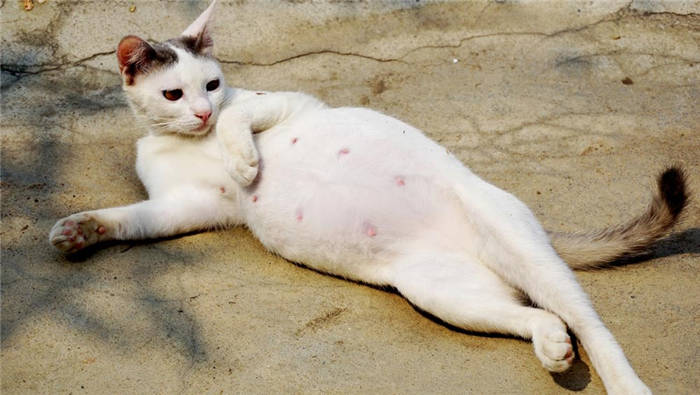
How to tell if a cat is pregnant
Observe the cat. The first signs of pregnancy in cats are associated with changes in behavior and appearance and appear as early as 2-3 weeks from the date of intended mating.
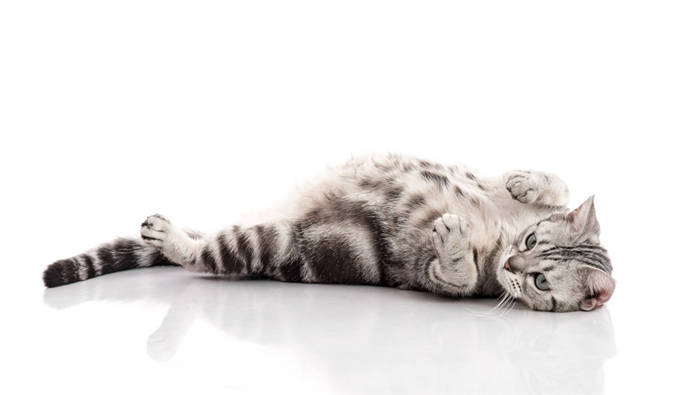
Increased sleepiness. The animal sleeps a lot, is reluctant to play moving games and walks slowly.
Change of behavior. An affectionate and sociable cat may become wary and even aggressive, and independent and aloof, on the contrary, constantly ask to hold hands and demand attention. Changes in her behavior are due to a change in her hormones. After the birth of kittens and the completion of lactation, the character of the pet becomes the same.
Delayed sexual cycle. If the heat was regular, and stopped immediately after the mating, the probability of pregnancy is very high.
Nausea. Usually a pregnant cat vomits only in the morning. If vomiting recurs more often and lasts more than 2-3 days, see your veterinarian.
Change in appetite. In the first half of a domestic cat's pregnancy, the pet's appetite may decrease and, conversely, become atypically good in the second half. The cat may refuse its usual food and show interest in something new. During this period, the cat needs high-energy food that can make up for the deficiencies that occur.
Changes in the color and size of the nipples. Pregnant cats' nipples swell and become bright pink or coral red in color, and the hair around them thins.
Rounded belly. The changes will be noticeable both when viewed from above and in profile. But most likely only with a multiple pregnancy (more than 5 kittens). The main thing is not to try to feel the fetuses with your fingers yourself. This can traumatize both the fetus and the mother cat.
What not to do before labor begins
In order for the birth to go smoothly, pay attention to the list of things not to do:
- making a woman in labor nervous with loud shouts, numerous guests, parties;
- actively groping the cat's belly, as you could accidentally injure the cat or kittens;
- give the cat medications without consulting a health care professional;
- ignore vomiting, discharge and behavioral changes in a pregnant cat;
- let the cat come into contact with animals whose state of health you do not know;
- allowing the cat to sleep in a dirty place, picking up the animal with dirty hands, frequently changing the linen in the cat's sleeping area;
- Use chemicals to wash the house.
What to feed a pregnant cat
A cat preparing to give birth should be fed a caloric diet rich in vitamins and minerals.
In the first two weeks of pregnancy, the cat's appetite will increase, so the amount of food should be increased by 10%. The animal should be fed 4 times a day in small portions.
From the 3rd week of pregnancy the cat's appetite is at its maximum. You need to increase the amount of food by 50%, but under no circumstances should she be allowed to overeat, she should be fed 5-6 times a day in fractional portions.
If you feed your pet dry food, then choose food for pregnant cats and then for nursing mothers.
To increase lactation in your cat, give her fresh nettles, but first, steep the grass in boiling water so as not to burn the cat's internal organs and mouth.
First Signs
Friends, the first thing I recommend is to turn to your memory and remember when the mating occurred. Pregnancy lasts 65-70 days and even if you don't know the exact day of conception, an error of a few days is not critical. This is the first actual sign that labor is near.
The second sign of an impending addition is altered pet behavior.
About 2-3 days in advance, the pet will actively look for a place to give birth, choosing darkened corners, a pile of clothes, or a recessed place in a closet. Do not disturb your pet, but offer a more comfortable option – a box or crate with a bedded disposable diaper.
The third symptom is a change in body temperature. A cat's normal temperature does not exceed 39 degrees. When labor approaches, the temperature may drop to 37 degrees. Check out this article on how to take a cat's body temperature.
A fourth sign of impending labor will be the appearance of colostrum. This is easy to check. See if the cat's mammary glands have swollen. Usually the nipple is swollen and becomes a soft pink shade. Pressing on a nipple may produce colostrum.
If the cat behaves unnaturally, cannot sit in one place, is hunched over, you probably see the sixth symptom of labor – training contractions.
It is important to know that these "markers" may or may not be present together. The only accurate way to determine if labor is imminent is to count it from the day of mating.
Signs that labor has already started
If you are reading this article and do not see the first signs, it means that the labor process has probably already begun. An animal's body prepares just like a human's: its cervix opens and contracts. This stage goes unnoticed by the owners, but it can be determined by an experienced veterinarian.
- The animal tries at all costs to get to the place, which it has found in the house and chosen for the birthing stage: it does not sit in its arms, snaps and returns to its "nest". Do not worry if at this time your pet refuses food. Put clean warm water and light non-fat food nearby. In fact, here is a separate article on what to feed the cat, read it.
- The birth plug has come out – a pink bubble, at first glance, and a red clot if the plug has already come out. You can see it in the bedding or notice it when the cat eats it.
- An abundance of mucous amniotic fluid with a yellow tint. If the cat is already in its seat, you can tell if the fluid is coming out by touching the bedding. If the bedding is wet, replace it. I generally suggest buying a disposable diaper so that you can get your kitty comfortable quickly and quickly.
These are three sure signs that labor is near. After the amniotic fluid is released, you can expect the first kitten to appear within a few hours. Watch Athena's video, she explains all the points by showing on her kitty:
If you have anything to add, please post in the comments. At this crucial time of replenishment, every piece of advice will come in handy.






